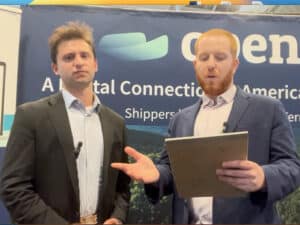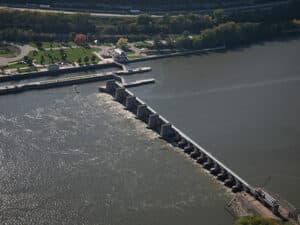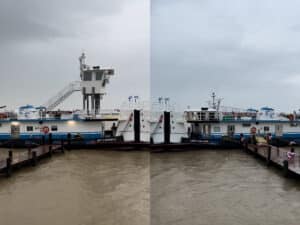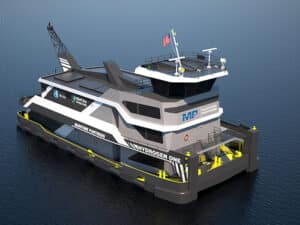
St. Louis region’s freight network continues to welcome greater volumes
Written by Heather Ervin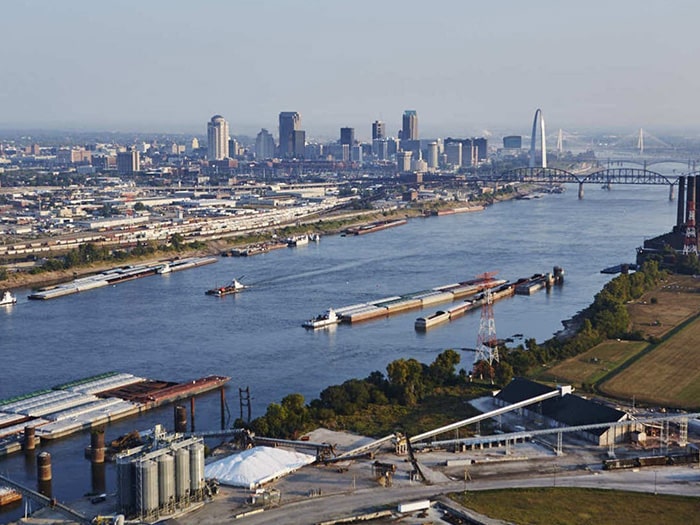
Marty Hettel discussed the interconnectivity among the transportation modes in the St. Louis region and how investment in other parts of the freight network benefits not only ACBL’s operations but also that of other terminals.
Representatives of the St. Louis, Mo., region’s world-class multimodal freight network and the barge industry were featured panelists last week at FreightWeekSTL 2024 and shared details on the latest trends in freight movement through the region by rail, river, roads and runways. The panelists also highlighted the continuing investments supporting the tremendous optionality that exists in the bi-state St. Louis area for shippers charting the course for their logistics.
Martin Hettel, vice president of Government Affairs at American Commercial Barge Line (ACBL), talked about the latest data from the U.S. Army Corps of Engineers that shows the St. Louis region’s inland port system is a leader in moving inbound and outbound agricultural products, while also handling large volumes of other diverse cargo. He said the Army Corps of Engineers Institute for Water Resources revealed there are 67 different commodities destined for or originating from this area. The most recent tonnage figures reveal the inbound tonnage is approximately 7.1 million, with fertilizer being the leading tonnage accounting for 2.5 million tons. The outbound tonnage, at about 39.3 million, is led by grain, which is about 15 million tons.
“When you look at both inbound and outbound tonnage, this is about 46.4 million tons that our barge industry transports into and out of the area,” said Hettel. He added that beyond inbound and outbound tonnage, there’s also 59 million tons that have transited through this area destined to or originated from the Illinois, Missouri and Upper Mississippi River. “This equates to approximately 105 million tons that transit this area. And, remember, our inland waterway system moves approximately 600 million tons annually. Right at about 17.5 to18% of all tonnage shipped on the inland waterways transits through this region.”
Investing for the Future
Hettel discussed the interconnectivity among the transportation modes in the St. Louis region and how investment in other parts of the freight network benefits not only ACBL’s operations but also that of other terminals. “The U.S. is certainly a multimodal transportation system,” he said. “Barges can’t get to the origins that rail can, and rail can’t handle all the tons that barges can. You also have trucking that delivers a lot of freight to its final destination.”
Additional investment is needed to maximize the potential of the inland waterways, according to Hettel. He said inland waterways operators annually contribute about $120 million to the Inland Waterway Trust Fund that can be paired with funds provided by the General Treasury for upgrades to the lock and dam system that could be used to build the seven new 1,200-foot lock chambers needed on the Upper Mississippi and Illinois rivers.
“When completed, the added efficiency and safety of the new lock chambers, and still having the 600-foot chamber available, creates redundancy so our barges can continue to move freight if one of the lock chambers are down for maintenance,” said Hettel. He also talked about recent drought conditions and the negative impact on barge capacity and shipping costs when barges can only load to a lower draft level. Hettel said the industry has an opportunity to address this through the 2024 Water Resources and Development Act by asking Congress to mandate the U.S. Army Corps of Engineers maintain the navigation channel between Cairo, Illinois and Baton Rouge, Louisiana at 12 feet, per the authorization in the Flood Control Act of 1944.
All of the panelists agreed that the outlook for the market over the next five to 10 years is exceedingly positive with the region presenting myriad advantages and multimodal infrastructure options for companies looking to efficiently ship goods anywhere in the nation and beyond.
The FreightWeekSTL panel session was moderated by Mary Lamie. Lamie is executive vice president of Multimodal Enterprises for Bi-State Development, which operates the St. Louis Regional Freightway.
“This was an insightful discussion on how the St. Louis region’s multimodal freight network continues to play a critical role in the movement of freight through the middle of America,” said Lamie. “Investments being made in our region’s freight network clearly are creating a tremendous opportunity for shippers looking for the most efficient options for getting their cargo into the Midwest or from the Midwest to coastal ports and on to other destinations.”

